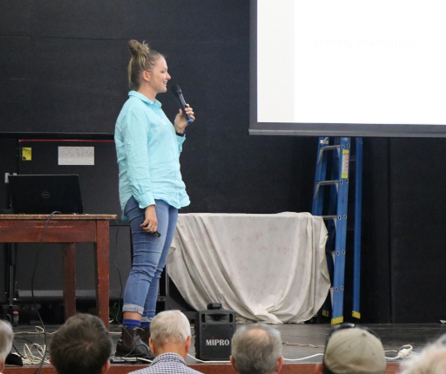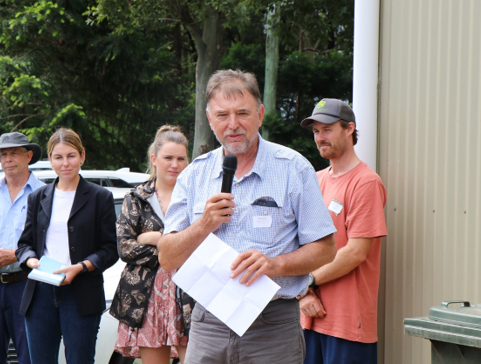SQ Regional Forum a success

One hundred industry stakeholders met at Crow’s Nest last month for the South Queensland Regional Forum. The key presentations of the forum were made by Harley Smith (CSIRO) and related to further understanding impacts on fruitset and fruit abscission. A discussion panel further added to some of the key issues attendees were keen to learn more about. Key take home messages from the presentations and panel included:
• Adequate carbohydrate levels in the tree (including the flower) each year are essential to set and retain fruit and minimise alternate and irregular bearing
• A relative humidity of 75% is optimum for pollen viability and pollination
• Reducing summer abscission has the potential to increase tree productivity by 24% or more.
• Encourage alternative pollinating insects by promoting biodiversity in the orchard: plant pollination gardens alongside the orchard, extend the interval of interrow slashing to allow the sward species to flower etc
• Things that can help pollinating insects include overhead misters (for cooling and increasing humidity) and avoiding the use of pyrethroids
• Research is being conducted in WA to ‘domesticate’ certain species of blowflies so they can be released into the orchard as pollinators at flowering
Other presentations included Ebony Faichney (DAF) speaking on the current threats and future directions of avocado pest management (AV19001), and John Agnew (DAF) who provided an update on the fruit quality supply chain project (AV18000). John Tyas (AAL) also spoke about quality challenges in his industry update.

Above: Ebony Faichney from Department of Agriculture & Fisheries talked about Managing Avocado Pests.
Ebony Faichney reported that a continued overuse of broad-spectrum insecticides could lead to a crisis in pest control through development of pesticide resistance, elimination of beneficial insects and emergence of secondary pests. Softer insecticides (e.g. Sivanto, Transform and Trivor) should be used in the first half of the season to prolong the valuable effects of beneficial insects as long as possible. If broad-spectrum insecticides need to be used, growers should try and delay their use as long as possible.

Above: John Agnew from Department of Agriculture & Fisheries presented on fruit quality in the supply chain.
John Agnew reminded attendees that regular pre-harvest fungicide sprays (applied with well-calibrated sprayers that achieve good coverage of the whole tree) as well as a post-harvest fungicide treatment are essential to prevent body rots at the end of the market chain. He also confirmed that packshed departure temperatures of fruit are often too high and variable, with Hass fruit needing to be at 7°C. John Tyas reported that fruit quality declined in all regions last year – thought to be mainly due to the oversupply resulting in fruit being in the supply chain longer with the inevitable loss in quality as it got older. With the expected doubling of production within the next five years he indicated that there will be no market for 2nd grade fruit, and that fruit destined for export will have to be particularly robust. Accurate forecasts and good communication up and down the supply chain will be essential.

Above: At the beginning and during the orchard walk Bill Kereczko provided an overview of the approaches being used in his orchard at Ravensbourne.
Bill and Kathy Kereczco hosted a field walk at their orchard at Ravensbourne. One of the biggest challenges that Bill discussed was establishing and keeping replant trees alive in spaces where older individual trees have died. This is a common problem in most growing regions of Australia where Phytophthora root rot was most likely the cause of the loss of the original trees. Pathologist Liz Dann was able to list some of the recommended measures to combat root rot in replants:
- fallow the ground for a year or more
• establish good planting mounds
• apply phosphorous acid and metalaxyl
• mulch to improve soil organic matter and microbiology
• order replant trees on rootstocks with some tolerance to root rot such as Dusa® and Velvick.
Date Published: 19/05/2022